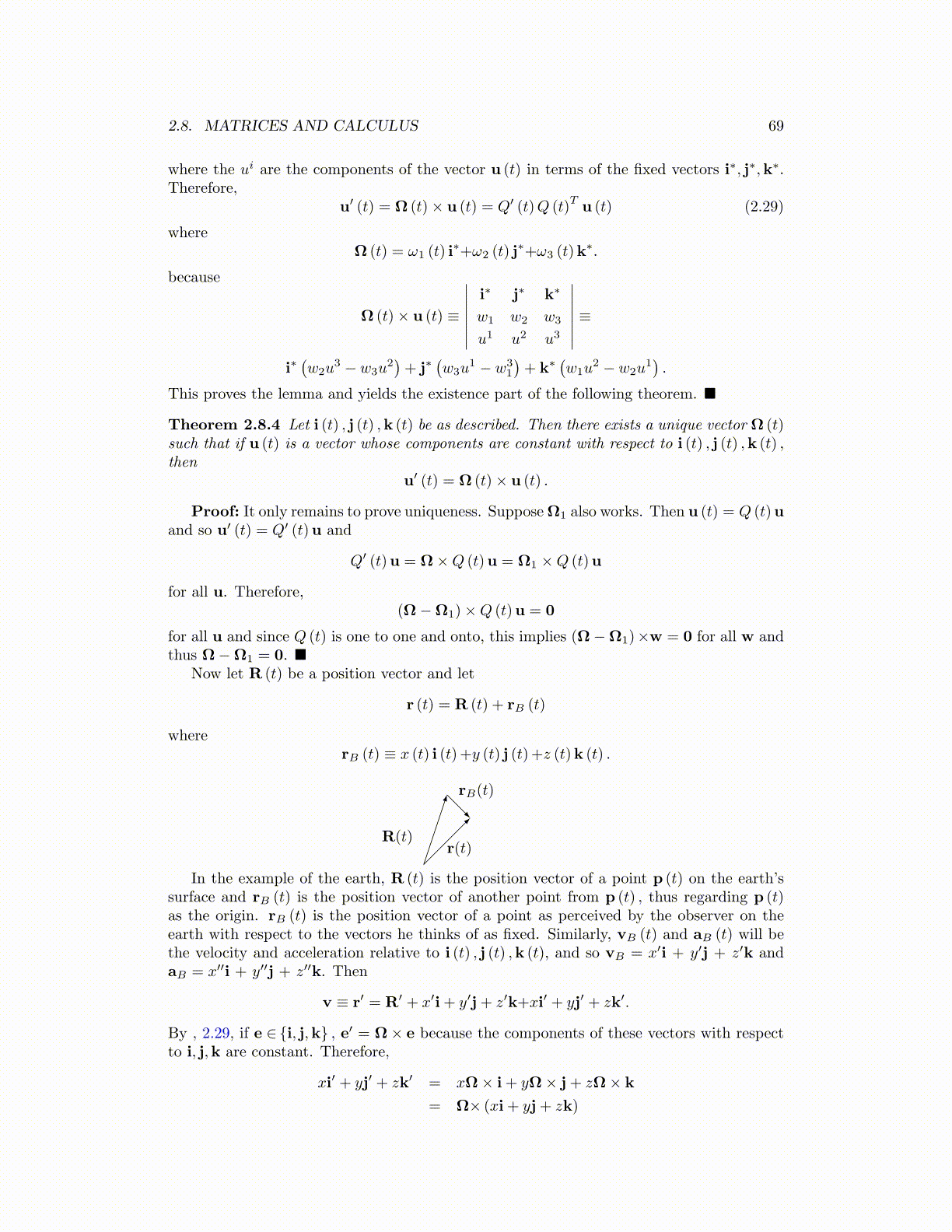
2.8. MATRICES AND CALCULUS 69
where the ui are the components of the vector u (t) in terms of the fixed vectors i∗, j∗,k∗.Therefore,
u′ (t) = Ω (t)× u (t) = Q′ (t)Q (t)Tu (t) (2.29)
whereΩ (t) = ω1 (t) i
∗+ω2 (t) j∗+ω3 (t)k
∗.
because
Ω (t)× u (t) ≡
∣∣∣∣∣∣∣i∗ j∗ k∗
w1 w2 w3
u1 u2 u3
∣∣∣∣∣∣∣ ≡i∗(w2u
3 − w3u2)+ j∗
(w3u
1 − w31
)+ k∗ (w1u
2 − w2u1).
This proves the lemma and yields the existence part of the following theorem. ■
Theorem 2.8.4 Let i (t) , j (t) ,k (t) be as described. Then there exists a unique vector Ω (t)such that if u (t) is a vector whose components are constant with respect to i (t) , j (t) ,k (t) ,then
u′ (t) = Ω (t)× u (t) .
Proof: It only remains to prove uniqueness. SupposeΩ1 also works. Then u (t) = Q (t)uand so u′ (t) = Q′ (t)u and
Q′ (t)u = Ω×Q (t)u = Ω1 ×Q (t)u
for all u. Therefore,(Ω−Ω1)×Q (t)u = 0
for all u and since Q (t) is one to one and onto, this implies (Ω−Ω1)×w = 0 for all w andthus Ω−Ω1 = 0. ■
Now let R (t) be a position vector and let
r (t) = R (t) + rB (t)
whererB (t) ≡ x (t) i (t)+y (t) j (t)+z (t)k (t) .
R(t)
rB(t)
r(t)
In the example of the earth, R (t) is the position vector of a point p (t) on the earth’ssurface and rB (t) is the position vector of another point from p (t) , thus regarding p (t)as the origin. rB (t) is the position vector of a point as perceived by the observer on theearth with respect to the vectors he thinks of as fixed. Similarly, vB (t) and aB (t) will bethe velocity and acceleration relative to i (t) , j (t) ,k (t), and so vB = x′i + y′j + z′k andaB = x′′i + y′′j + z′′k. Then
v ≡ r′ = R′ + x′i+ y′j+ z′k+xi′ + yj′ + zk′.
By , 2.29, if e ∈{i, j,k} , e′ = Ω× e because the components of these vectors with respectto i, j,k are constant. Therefore,
xi′ + yj′ + zk′ = xΩ× i+ yΩ× j+ zΩ× k
= Ω× (xi+ yj+ zk)